Marketing is all about putting out the right message for the right people at the right time. This seems simple but it involves a lot of planning and (paradoxically) room for improvisation. That’s why a messaging strategy can be crucial for any and every business.
This article will go over the trends that you need to take into account for your messaging strategy. We’re also going to feature a major use case that illustrates these concepts in brand communication and advertising practice. Hopefully, these can help achieve a corporate communication transformation for smaller businesses.
Messaging Strategy Needs to Be Dynamic
In 2022, there are a number of places your message will be cropping up. Various channels include your social media, your website, and your offline content. However, what marketers are finding more and more is that there is no silver bullet for messaging. This has led to more dynamic forms of messaging and brand elements.
The two ways this is most apparent are Adaptable Logos and Adaptable Messaging. Having different variations of your logo or your social media content for different channels and situations is useful for conveying different elements of the business. This comes with the understanding that what works on, for example, Twitter is not going to work on Instagram.
The adaptability of both messages and branding materials keeps in mind that audiences have different segments within them. It helps a company maintain multiple facets because the language and format of one channel will not translate everywhere else.
That raises the question: how can companies establish a brand identity with variable branding? It’s always important to make sure your strategy is relevant to your brand messaging framework for the sake of consistency. Keep one of these on hand and teach it to new recruits to keep your voice within the parameters. It may even be useful to have different frameworks that vary for different channels.
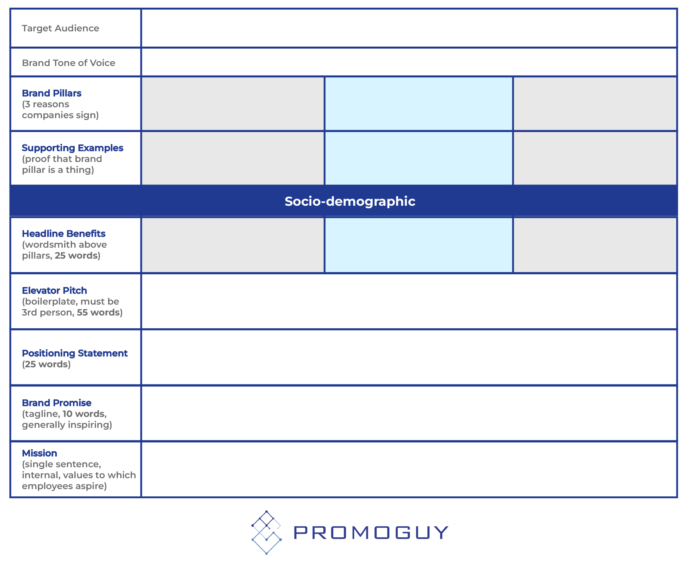
Social Brading & Messaging Strategy Tips
Branding in the age of social media is a process in constant flux. That’s why it’s important to update your branding for the year to meet the needs of new channels, new audiences, and new environments. The latest trends in social branding indicate:
- TikTok Marketing will be a major asset
TikTok has been making an impact among the youth demos. It also has some neat branding and marketing tools no other platform has (which we covered here). Research indicates the best messaging on TikTok is concise, tightly edited for a fast pace, and includes music.
- Pinterest and Snapchat will allow for better segmentation
The smaller platforms allow for a more focused and (sometimes) cheaper advertising pool. Build your brand in these places if they suit your message, product, and audience.
- All signs indicate increasing social commerce
Signs point toward more and more storefront integration for social media platforms. Have content and branding materials ready for better eCommerce options.
- Video isn’t losing steam yet while audio is rising
Video content is still the best way to get your marketing message out there. However, audio content is rising with the increase in podcast listens and voice search optimization. If relevant, make sure your branding contains distinct audio elements like soundbites, jingles, and voice search keywords.
- Influencer marketing is climbing
Influencers are becoming a bigger staple of the online marketing sphere. When choosing an influencer, make sure they align with your brand image and target audience. We’ve written more thoroughly about influencer marketing here.
Focus on Customer Communication Management Strategy

Brands spend far too much time on the internal branding aspects and setting up the details. What matters in 2022 and beyond is how customers interact with the brand. Your job is to make sure the communication strategy results in meaningful conversions, sales, and improved brand consideration.
Any brand communication strategy needs to put the customer first. Here are a few ways to do that:
- Personalize the communication: use the names of your customers to make them feel more at home in communications and tailor the experience to their behaviour (e.g., give them a discount for a product they usually buy)
- Customizable choices: Your communication should work best for the customer. Ask them what times are best to message them, what type of communication they prefer (text or visual), and the choice to opt out of any potentially annoying email chains
- Humanize your important messaging: Make sure your customers feel like there is a person at the other end. While it’s important to delegate menial tasks to automation, your core customers need personal attention
- Keep track of Crucial Mentions: Put up Google Alerts and monitor your keywords like a hawk. Get ahead of questions customers have and adjust your pages, product tutorials, and content to clear up any misconceptions or miscommunications. You should also use messaging apps or Discord to create a self-sustaining customer community
Speaking of messaging apps…
Messaging App Strategies for Small Business
If you’re a small business, you need to get close to your community and establish a rapport. While large businesses have to adjust their message to attract the lowest common denominator, you can focus on the core customer base. A great way to do this is to make use of messaging apps like Telegram and Discord to build communities.
To truly tap into your potential, make use of your ability to deliver to that modest audience to build long-term connections. Direct communication and personalized customer service is your key advantage. Here’s how to make the most of it with a coherent strategy for 2022:
- Employ Automation
To manage the inflow of customer queries and requests, you can employ chatbots to handle the least sophisticated ones. Using proper automation can help relieve a lot of grunt work.
- Use Interstitial Messaging
Interstitial messaging is a great way to transition customers to other pages outside the app. The message should display a concise description and inviting image with a USP that drives CTR.
- Cross-Channel Promotion
As we previously mentioned, it’s important to have a consistent yet variable brand voice across multiple channels. See how wide your net is by examining who you attract on each channel and see if it matches your desired segmentation strategy. Adjust your message accordingly based on the company’s needs.
- Monitor Crucial Metrics
When it comes to your messages and user activities, monitor their effects closely. Use analytics to find where people click after you put out your message to judge its effectiveness.
Use Case: Nike & Adidas Branding & Messaging Applications
Here are some excellent cases of how big companies managed their corporate brand management and marketing messages. Nike and Adidas are the big 2 in mass-produced footwear, so it’s important to see how they continuously contrast their messaging while maintaining their core identity and applying some of the trends highlighted previously.
Variable Logo & Messaging Strategy
Nike’s brand guidelines show how they maintain the variations of their logo while maintaining crucial elements:

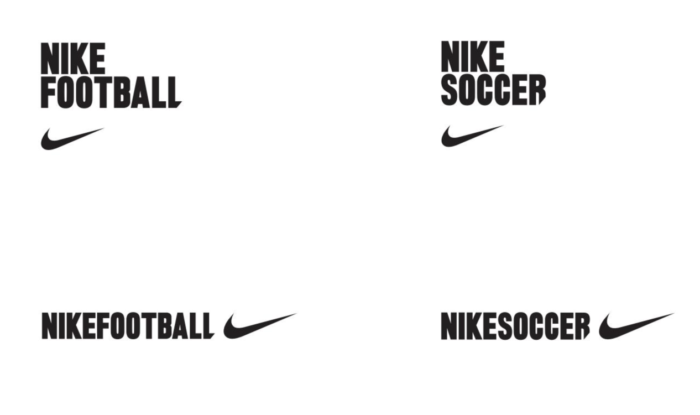
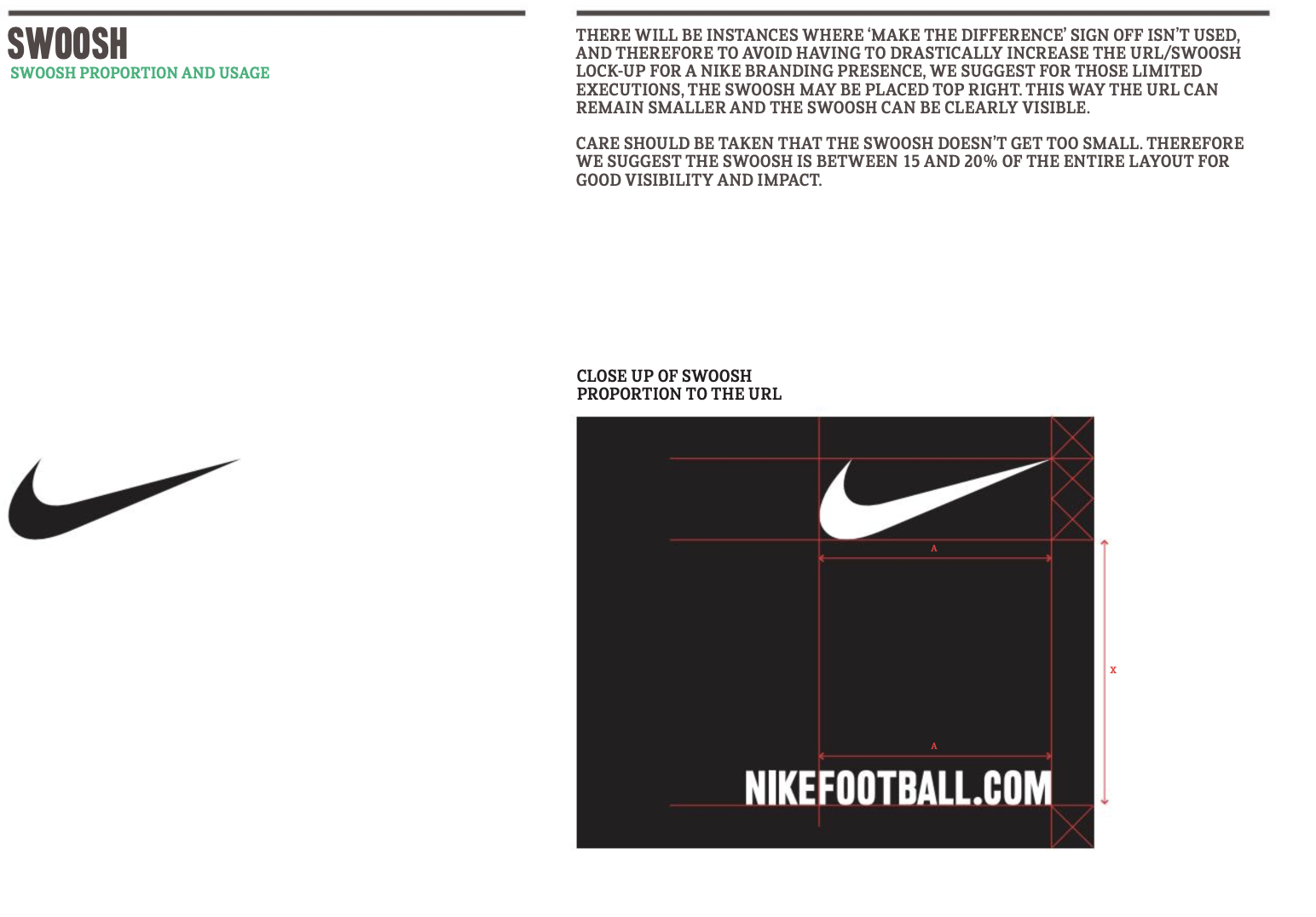
Adidas’ brand guidelines similarly outline multiple variations of their Adidas logo but highlight crucial dos and don’ts:
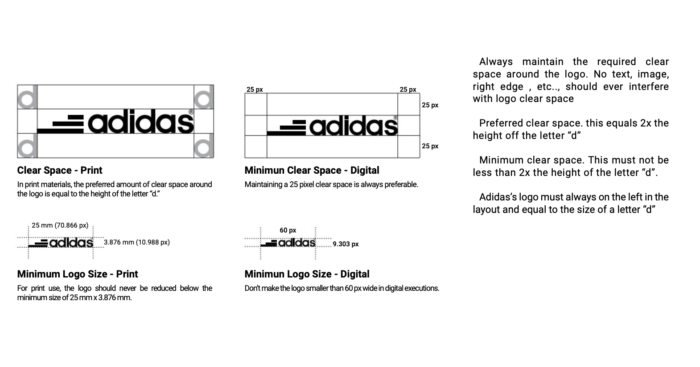

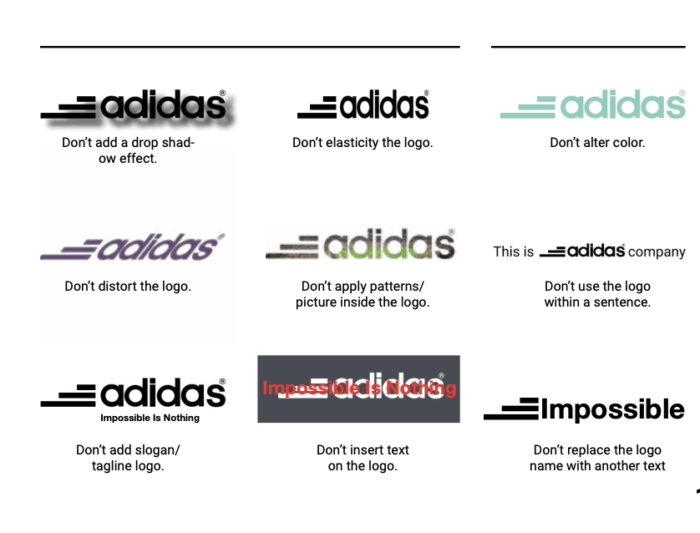
Here’s how the messaging strategy reflects the company’s values from their messaging framework:

2-Way Communication & Community Building
Nike employs 2-way communication in their messaging strategy through Instagram and Twitter. Their general strategy is to:
- Collaborate with high-profile people
- Encourage and employ user-generated content
- Partake in customers’ conversations
- Distribute storytelling across social media channels
Here’s an example of Instagram submissions that they incorporate into their social media marketing. The campaign came with a tool that let users make these pictures. This is an example of customization and personalization of messages that helps users be more involved in the marketing message. The use of the tool also helps all the user-generated content remain within the brand guidelines by drawing creative borders around the customer-generated output.

It’s also interesting to note that the images they selected fit their brand image from their guidelines:

Influencer Messaging Strategy
Adidas has, similarly, been prolific in its use of influencers and personalization. Using influencers, they maintain their guidelines as seen earlier (spirit of sport, athlete-centred, clearly featuring Adidas items, etc.). They followed these images up with stories of female athletes.

The purpose of these campaigns was to adjust their messaging to be more female-inclusive. They made a major splash, boosting engagement within the female demo using these images and stories.
Hopefully, you too can apply these same strategies by learning from the best.


